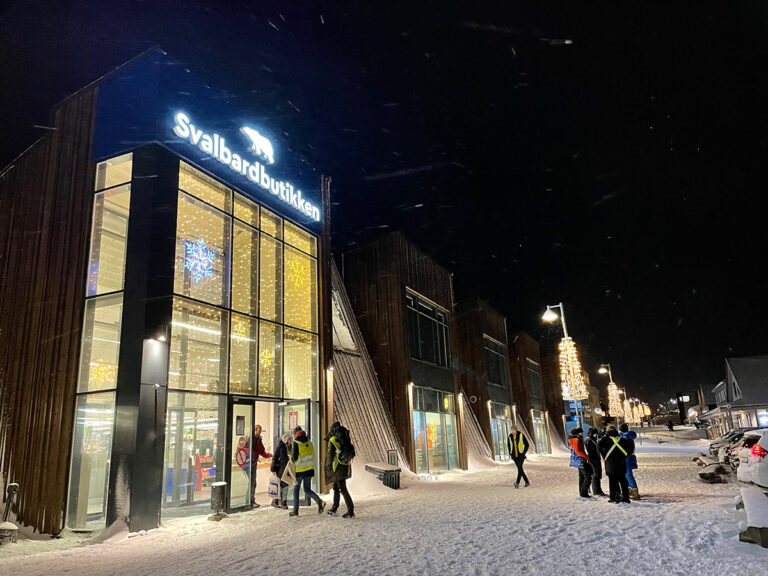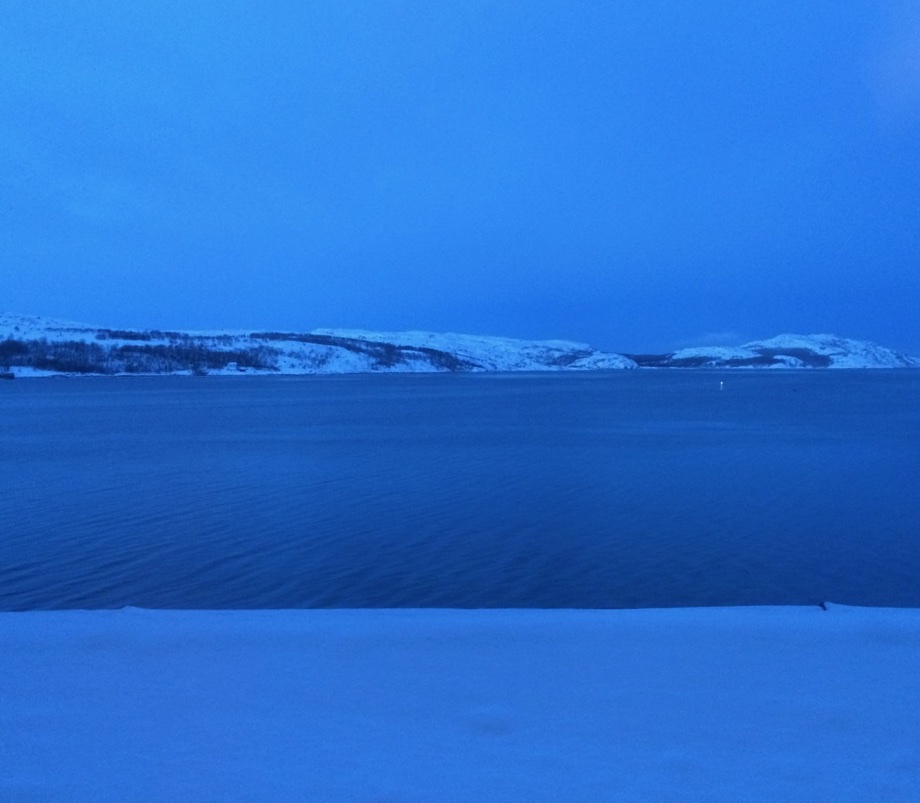The Midnight Sun is one of Norway’s most celebrated natural wonders. But during the long winter months, the opposite phenomenon occurs and the Polar Night can be just as magical.
Most of us take daylight for granted. As the old saying goes, “as sure as the sun will rise.” But in Northern Norway, that’s not always the case.

Just as the sun never fully sets for weeks or even months during the summer in what’s called the famous Midnight Sun, there are places where it doesn’t rise at all during the depths of winter. This extended darkness is known as the Polar Night.
It may sound bleak, but for those who live in the Arctic, the Polar Night is a natural part of life—and in its own quiet way, it can be stunningly beautiful.
Table of Contents
When Does the Polar Night Happen in Norway?
The Polar Night is a natural phenomenon that occurs only above the Arctic Circle, where, for at least one day each winter, the sun fails to rise above the horizon. In most Arctic locations, the Polar Night lasts anywhere from a single day to a couple of months, depending on how far north you are.
The Arctic Circle is currently located at a latitude of 66°33′ North, and in Norway, it cuts through Nordland county, just north of the Saltfjellet mountains. From that line and further north, the period of darkness grows longer the closer you get to the North Pole.
Here’s how the Polar Night plays out in some well-known northern locations in Norway:
Bodø: Located just north of the Arctic Circle, Bodø sits right on the edge of the Polar Night zone. However, due to the way sunlight bends through the atmosphere the sun does still just peek over the horizon at midday, even at the solstice.
Because of this phenomenon known as atmospheric refraction, Bodø does not experience a full Polar Night, though daylight is extremely limited, often lasting less than an hour.
Narvik: Slightly further north, Narvik brushes against the edge of the phenomenon. The sun dips below the horizon for a few days around the winter solstice, producing long twilight hours instead of full daylight.
Tromsø: Located at nearly 70° North, Tromsø experiences true Polar Night from around 27 November to 15 January. During this time, the sun doesn’t rise at all, though a bluish twilight casts an eerie glow during the middle of the day. Despite the darkness, life in the city carries on as normal.
Hammerfest: One of the world’s northernmost towns, Hammerfest sees a Polar Night from late November to mid-January, depending on your exact location and the surrounding terrain.
Honningsvåg and North Cape (Nordkapp): Further north still, this area endures over two months without sunrise, from approximately mid-November to late January.
Longyearbyen, Svalbard: The world's northernmost permanently inhabited town experiences the most extreme version of the Polar Night.

Here, the town experiences ‘civil polar night’, essentially almost complete darkness, all day, from 11 November to 30 January. Locals won’t see the sun, however, from the end of October to the middle of February.
In general, the Polar Night begins and ends earlier or later depending on your latitude. While it may sound bleak, many people find beauty and peace in the slow, muted light and the quiet atmosphere of Norway’s Arctic winter.
Why Does the Polar Night Happen?
The phenomenon is caused by the Earth’s tilt. Our planet spins on an axis that’s tilted about 23.5 degrees relative to its orbit around the sun.
Because of this tilt, parts of the Earth lean away from the sun during winter. Above a certain latitude, that means the sun never climbs above the horizon for a time, creating months of darkness at the poles.
The elliptical shape of the Earth’s orbit adds a twist: the South Pole experiences a slightly longer Polar Night than the North Pole. But since Antarctica has no permanent civilian population, most of us only need to worry about the northern version.
Types of Polar Night
Not all Polar Nights are created equal. The degree of darkness depends on how far north you are—and how far the sun stays below the horizon.
Polar Twilight: This occurs when the sun is less than 6 degrees below the horizon. You won’t see the sun itself, but you’ll still get a dim glow at midday. That’s enough for a ‘blue hour’ effect that can last for hours. This is the form of ‘polar night’ that much of Norway experiences.

Civil Polar Night: There’s no true daylight, but there may still be enough light for outdoor activity without artificial lighting. The sun remains between 6 and 12 degrees below the horizon. Svalbard experiences this form of polar night for several weeks.
Nautical Polar Night: The sun is 12 to 18 degrees below the horizon. Only a faint twilight remains, mostly from the reflection of starlight or the moon, and skies are dark enough for navigation by the stars.
Astronomical Polar Night: The darkest it gets. The sun never gets closer than 18 degrees to the horizon, and the sky remains fully dark 24/7. This occurs only near the poles and is not experienced by any permanent settlements.
Where Can You Experience the Polar Night in Norway?
The easiest place to experience the Polar Night in Norway is Tromsø, a lively Arctic city with good infrastructure and plenty of winter activities, from dog sledding and snowshoeing to Northern Lights hunting.
If you want something more extreme, head to Svalbard, where the Polar Night lasts more than two months. In mid-winter, even civil twilight disappears, and the island is plunged into near-total darkness. Yet life continues. There are cafes, museums, and a surprising number of events to enjoy, even in the dark.
For those who prefer a hint of daylight, areas just inside the Arctic Circle like Narvik, Mo i Rana, and Sortland offer a gentler introduction. You’ll still get that blue-tinted polar twilight, but also a few hours of soft ambient light each day.
What Does the Polar Night Look Like?
It’s easy to imagine the Polar Night as endless pitch blackness, but that’s not accurate. Most places in Northern Norway don’t spend the winter in total darkness. Instead, they enter a kind of extended twilight.
During the few brightest hours of the day, the sky turns a rich cobalt blue, casting a surreal glow across the landscape. Snow and ice reflect this light, adding a silvery sheen to mountains, harbours, and rooftops.
Streetlights stay on throughout the day. Indoors, lights bounce off the windows, creating mirrored reflections and a cosy cocoon-like atmosphere that Norwegians embrace with candles, fireplaces, and warm drinks.
The darkness also brings a major bonus: ideal conditions for seeing the Northern Lights. Without the interference of sunlight, the aurora can appear any time of day or night. Weather permitting, of course.
How Does the Polar Night Affect People?
Living without daylight isn’t always easy. The lack of natural light can disrupt sleep cycles and energy levels. Some people experience Seasonal Affective Disorder (SAD), a type of winter depression caused by reduced exposure to sunlight.
Yet studies have shown that people in Northern Norway don’t suffer from SAD as often as you might expect. Researchers believe that attitude plays a big role: by accepting the darkness as part of life and finding ways to enjoy it, locals fare better than those who dread it.
Light therapy lamps are common in Arctic households, and people make a conscious effort to stay active, go outside during twilight hours, and enjoy the season for what it is.
Polar Nights Around the World
Norway isn’t the only place where you can experience the Polar Night. The phenomenon occurs across the Arctic and Antarctic regions, affecting various communities and landscapes in strikingly different ways.
In northern Sweden and Finland, small towns like Kiruna and Utsjoki sit just above the Arctic Circle. Much like northern Norway, these areas experience weeks of low light and polar twilight, but also embrace the season with winter sports, festivals, and Sámi cultural traditions that bring light to the darkness.
In Russia, vast swathes of the Arctic experience long, harsh Polar Nights. The city of Murmansk, one of the largest Arctic settlements, endures around six weeks without sunrise each year.
Further east, the remote industrial city of Norilsk (closed to foreign visitors) faces nearly two months of darkness, intensified by extreme cold and isolation.
In Alaska, the small town of Utqiaġvik (formerly Barrow) is the northernmost settlement in the United States. It enters Polar Night in mid-November and doesn’t see the sun again until late January.
Despite the darkness, local life continues much like in Norway, with school, work, and community events carrying on.
Northern Canada and Greenland also lie within the Polar Night zone. In settlements like Resolute and Grise Fiord in Canada, the sun stays below the horizon for weeks.
Indigenous communities in these regions have long adapted to the rhythm of Arctic seasons, drawing on traditional knowledge and communal resilience.
In the southern hemisphere, the only land to experience the Polar Night is Antarctica, and to a far more extreme degree.
At the South Pole, the sun sets in March and doesn’t rise again until late September. But with no permanent population and very limited access, this is largely a world of research stations, hardy scientists, and yes, the occasional penguin colony.
The Polar Night may seem intimidating, but for those who experience it, it’s often described as peaceful, introspective, and even beautiful. Rather than a time of hibernation, winter in Northern Norway is a season of adaptation and quiet wonder. It’s a reminder that light isn’t the only thing that can brighten a landscape.
And if you’re not ready to book your ticket just yet? Maybe just start with a film like 30 Days of Night—though that version of the Polar Night comes with vampires, so… maybe don’t.


It is very interesting to know about the days and nights of the polar regions of Scandinavian countrie. Well, can you show us a video demonstrating the real picture of the situatio.
This is really very interesting to know. Having such lon night can be really difficut.